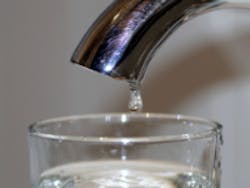WaterWorld Weekly Newscast, August 28, 2017
The following is a transcript of the WaterWorld Weekly Newscast for August 28, 2017.
Hi, I'm Angela Godwin for WaterWorld magazine, bringing you water and wastewater news headlines for the week of August 28th. Coming up...
Water agencies speak out against California 'water tax'
Michigan repair trench fills with sewage
Funding to boost Washington State nonpoint source pollution program
Bakersfield to tackle TCP through upgrade of drinking water wells
China reports some progress in massive water clean-up effort
Last week, water agencies from throughout California joined with the Association of California Water Agencies to publicly voice their opposition to a bill that would establish the state’s first-ever tax on drinking water.
Proponents of Senate Bill 623 say it would generate $2 billion over the next 15 years to clean up contaminated groundwater and improve faulty water systems and wells by assessing a $0.95 monthly fee on home water bills, as well as through taxes on businesses of up to $10 per month, and through higher fees on agricultural and dairy businesses.
The bill has been in negotiations for several months, but an amendment taxing homes and business was added just last Monday, without policy hearings or any input from water agencies.
Speaking at the Assembly Appropriations Committee meeting on August 23, the water agencies pledged their commitment to ensuring safe drinking water, but suggested that money from the existing General Fund should be used for water clean-up projects.
The water agencies maintain that levying a tax on water users would set a bad precedent and negatively impact water affordability for low income residents.
In Macomb County, Michigan, officials are investigating what could have caused a repair trench to fill with about 9 feet of sewage last week.
The 300-foot by 28-foot by 65-foot deep trench is being used to repair a sinkhole that resulted from the collapse of a giant sewer interceptor on 15 Mile Road last December.
The sewage -- some 1.5 million gallons of it -- is in the process of being pumped out and returned to the sanitary sewer system further downstream.
Officials say all of the sewage was contained in the repair trench, and none entered into local waters.
Fortunately, no one was in the trench at the time of the incident and no injuries were reported.
Despite the setback, officials say the $75 million repair project should still be on track for completion in December as planned.
The U.S. EPA has awarded a little over $3 million in grant funding to the Washington Department of Ecology to support its efforts to address nonpoint source pollution in surface and groundwater.
Nine projects will share the grant money, which will be matched by funds from the state's upcoming two-year capital budget when passed.
According to EPA, nonpoint sources of pollution continue to be recognized as the nation's largest remaining cause of surface water quality impairments.
Sources include agricultural runoff, unpermitted urban runoff, abandoned mine drainage, failing onsite disposal systems, and pollution caused by changes to natural stream channels.
The city of Bakersfield, Calif., will upgrade 30 of its 64 wells to allow removal of 1,2,3-Trichloropropane (TCP) to a level that complies with the recently adopted California Maximum Contaminant Level of 5 parts-per-trillion.
Under a $7.8 million contract, Evoqua Water Technologies will provide the city with 42 granular activated carbon (GAC) vessel systems that will be connected to the existing drinking water wells.
TCP, found in soil fumigants widely used in the agricultural area surrounding Bakersfield, is now a regulated synthetic organic contaminant in the state of California and has been identified as a cancer-causing compound.
In international news, China's environment ministry announced last week that almost 8,000 projects were launched in the first half of this year to treat and prevent water pollution.
The projects represent an investment of approximately $100 billion and are part of the country's 2015 action plan to improve its waterways and address pollution from industrial wastewater.
The ministry reported that, in general, water quality has improved toward 2017 goals but that some regions were lagging.
China is implementing an initiative to make local water managers more accountable for their water quality efforts, appointing some 200,000 "river chiefs" across the country.
For WaterWorld magazine, I'm Angela Godwin. Thanks for watching.
